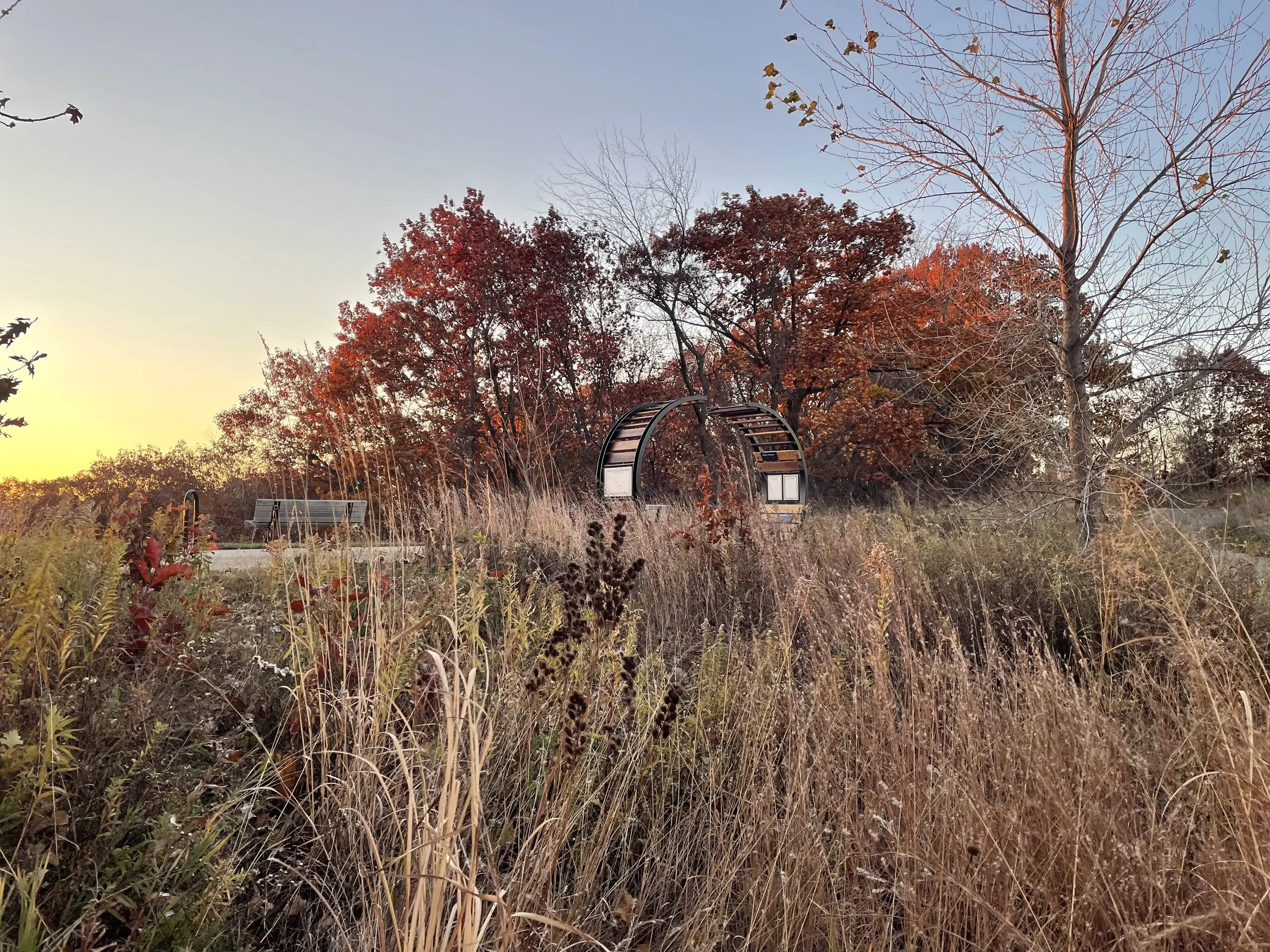DAKOTA HOMELAND FRAMES
Expanding the concept of interpretation for outdoor learning environments through the inspiring and inviting presentation of underheard Indigenous stories.
Dakota County, Minnesota
12 miles, 2021-2023
-
The Minnesota River Greenway includes a variety of evocative settings—places for discovery, reflection, and learning—and places where trail visitors can see and feel change over time. While this stretch of river has endured great changes over time, it has long been and still is Dakota homeland. The interpretive messaging project evolved over an eight-year period, growing out of the Minnesota River Cultural Resources Interpretive Plan that the landscape architect and their collaborative team completed in 2017. Dakota County is a strong advocate of this work and the design team has supported their pursuit of grant funding to support implementation by reviewing project descriptions and expanding the County’s relationships with Dakota knowledge keepers. The care and focus on Indigenous co-design and authorship, and the investment in natural materials and design of non-traditional messaging features, has built trust between the County and the Tribes.
“The Land Remembers” serves as an overarching interpretive theme for the Minnesota River Greenway, reflecting the Dakota belief that the earth holds memories of what’s happened through time. For thousands of years, the Minnesota River Valley has been home to the Dakota people and remains an important spiritual center. There are few places throughout the river valleys of Minnesota where Indigenous perspectives and stories are being told and celebrated. This project aims to acknowledge that despite genocidal removal, dispossession, and the ongoing forces of settler-colonialism, Dakota people and nations are still here.
-
The design team included landscape architects, a cost estimator, a Dakota writer, and an Indigenous advisory committee. With support from the client, the design team invited a Dakota-led advisory committee to guide the design of the messaging features and help select stories to share through a series of collaborative workshops. The design team, with the Indigenous advisory committee, engaged a small group of Dakota co-developers to lead the development of interpretive content, storytelling, editing, artwork, and Dakota language translation. Traditional Dakota stories and lessons were selected carefully and are appropriate for sharing with a larger audience.
Three types of Dakota stories are told across the ten interpretive nodes. Oceti Šakowiŋ stories describe the seven major divisions or Seven Council Fires of the Dakota people, Creation stories common to all Dakota people, and Hituŋkakaŋ Stories or traditional teaching stories specific to this landscape. Many versions of each story told at the interpretive nodes exist among Dakota peoples. This project does not seek to privilege a particular story above another, and instead holds all of them with equal truth, reverence, and respect for the traditions, tribes, and families they have come from.
-
Visitors to the trails encounter ten messaging features nested in the landscape. At each feature, two arches built of steel and wood are situated facing one another forming implied circles, anchored by the ground below and open to the sky above. The arches frame views of the river or a specific native plant, and prompt sensory interactions with the landscape. Small log clusters located at each feature provide a playful invitation to climb or sit, sparking curiosity and offering reminders to slow down, look up, and engage with the landscape around you.
Messaging panels that spin within the arches share traditional Dakota stories in both English and Dakota, descriptions of the human, animal, and plant relatives within those stories, and short teaching lessons that explain Dakota values and concepts to visitors. Spinning panels also reveal illustrations of story characters created by Dakota artists. The circular space speaks the cyclical and symbiotic relationships of characters introduced within these stories and the role humans play in supporting these non-human species. Native plants that include edible, medicinal, and culturally significant species that complement the stories being told embrace the nodes and are an important way of celebrating and carrying Dakota values forward. The features offer an invitation to learn from these landscapes in ways that are inspired by Dakota traditions.
PROJECT DETAILS
Location Dakota County, Minnesota
Client Dakota County
Team TEN x TEN, Cole Redhorse Taylor, Kachina Yeager, Clifford Canku, Carrie Schommer, Gabrielle Tateyuskanskan, Yvonne Wynde, Indigenous Advisory Group, Split Rock Studios, Urban Companies, Archetype
Area 12 miles
Status Completed in 2023
Photos Bria Fast Photography







